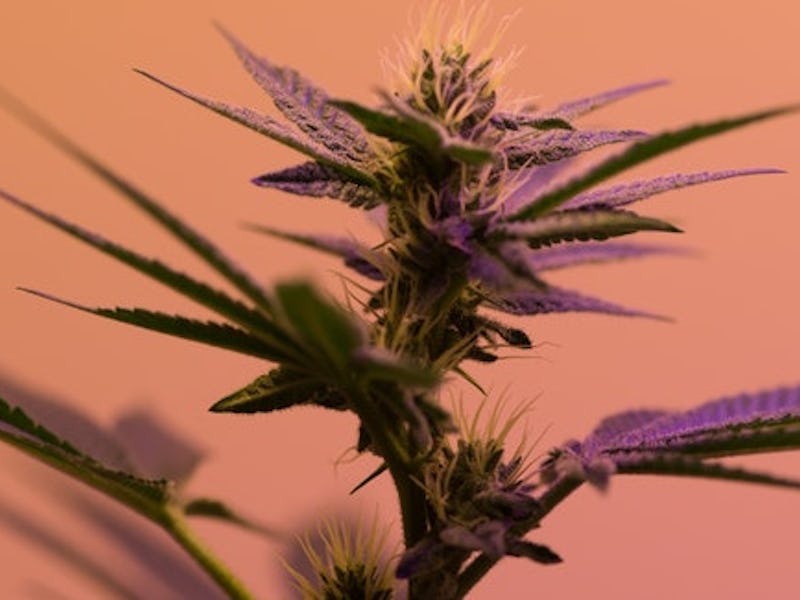Inverse Daily: CBD's Impact on Mood and Aggression Revealed
The dizzying number of products that CBD is added to these days can obscure the fact that we don’t actually know all that much about what it does.

Welcome to August, Inverse Daily fam. A new month means new cool rewards. To mark the start of a new school year, this month’s prizes are back-to-school themed, but they’re a big step up from pencil cases and backpacks.
- Platinum: Microsoft Surface Go
- Gold: Sony Noise Canceling Headphones
- Silver: Nomatic Travel Backpack
- Learn more here.
Finally, big congrats to readers Lindsey A., Kelly W., and David H. for taking home our July prizes. They are definitely going to freak out when they read this. Now, let’s get y’all caught up on today’s news.
You’re reading an adapted version of the Inverse Daily newsletter. Subscribe for free and earn rewards for reading every day.
INVERSE QUOTE OF THE DAY
“You can make dog poop taste good with enough sugar.”
— Endocrinology professor Dr. Robert Lustig, on a crucial fact that the sugar industry is based upon.
Blown Away
While solar energy has been hamming it up on the renewable energy stage, offshore wind power has gradually been making waves. As Mike Brown tells me, the world’s total capacity for offshore wind power grew by 20 percent last year — aided, in part, by the discovery of new and suitably windy locations. According to Carnegie Mellon University researchers, wind installations in the North Atlantic ocean could actually meet all of humanity’s energy needs.
We’re getting there, slowly. This week, Beatrice Offshore Wind Farm, the world’s fourth-largest, flipped its switches on this week, providing power for nearly half a million homes. Reaching 288 meters into the air and dipping deep into the ocean floor, Beatrice is officially the world’s deepest non-floating wind farm, and with enough support, there may be many more like her soon.
Read up on how Beatrice collects so much energy.
The more you know:
Real Chill
The dizzying number of products that CBD is added to these days can obscure the fact that we don’t actually know all that much about what it does. Testimonials from CBD devotees say it can make people feel less anxious and more relaxed, but the science explaining how that happens is still thin. But slowly, scientists are beginning to understand.
As Emma Betuel tells me, researchers in Brazil recently showed that CBD can reduce aggressive behavior in mice — and more importantly, they explained how it works. The poor mice first went into isolation to make them cranky so the scientists could see whether the CBD chilled them out — and it did. The mice that got CBD weren’t as aggressive toward other mice, once the isolation period ended. It’s starting to look like CBD works via the brain’s serotonin and endocannabinoid systems, but don’t count on seeing CBD anti-anxiety drugs on the market anytime soon.
Find out how much chiller the cranky mice became.
The more you know:
Screening for Success
Depression and anxiety are a huge pain to deal with, in part because the common treatments we rely on just don’t work for everybody. One of those treatments is called cognitive behavioral therapy, or CBT, a type of talk therapy that, over time, can really help people change their thinking patterns and respond to negative thoughts in a healthy way. Unfortunately, only about 45 percent of patients respond to it positively.
To get people to find the right treatment plan sooner, scientists are looking for ways to predict who will respond to certain kinds of therapy. As Sarah Sloat tells me, researchers have successfully identified two parts of the brain that are more active in people who will be responsive to CBT therapy — the right striatum and right amygdala, two zones linked to the process of reinforcement learning.
Here’s how this can help people get better faster.
The more you know:
Tile Trial
In case you have forgotten, this is the year of the Solar Roof, as Elon Musk declared in March, referring to the technology he first unveiled on the former set of Desperate Housewives in 2016. Earlier this week, the Tesla CEO announced that the company was hoping to manufacture “~1000 solar roofs/week by end of this year.” Naturally, people had questions. Key among them: What’s in a roof?
A thousand roofs seems like a lot of roofs, but it’s unclear what that entails. As Mike Brown writes, it all comes down to the number of solar tiles required to cover a living space. The current list of Tesla Solar Roof-havers, which is somewhat short, suggests that roofs range from 1,000 to 2,000 square feet in size, with varying ratios of solar to non-solar panels. (Tesla recommends about 35 percent solar.) The short of it is that Tesla says it will build a heck of a lot of tiles, and nobody can tell whether it will actually meet that goal.
Learn about the upside to shelling out for a solar roof.
The more you know:
Today’s Good Thing
Today, I’m cautiously optimistic about Coca-Cola and PepsiCo leaving the Plastics Industry Association, a plastics lobbying group that has fought against efforts to ban plastics in different states. Both companies, obviously reliant on plastic bottles, say they’re looking into recycled and alternative plastics.
Meanwhile …
- Scientists confirm it’s hotter now than it has been in the last 2,000 years.
- Yes, flesh-eating bacteria is in the ocean, but it doesn’t mean you’ll die.
- Is sugar poison? Here’s the honest truth about the sweet substance.
- The best science fiction movies and shows on Netflix in August 2019.
Inverse Loot
Subscribe to Inverse Loot and learn about these deals first.
Thanks for reading, gang!
Thoughts on Coke and Pepsi’s latest move? Let me know at yasmin@inverse.com.
Funny how honey ain’t sweet like sugar,
— Yasmin